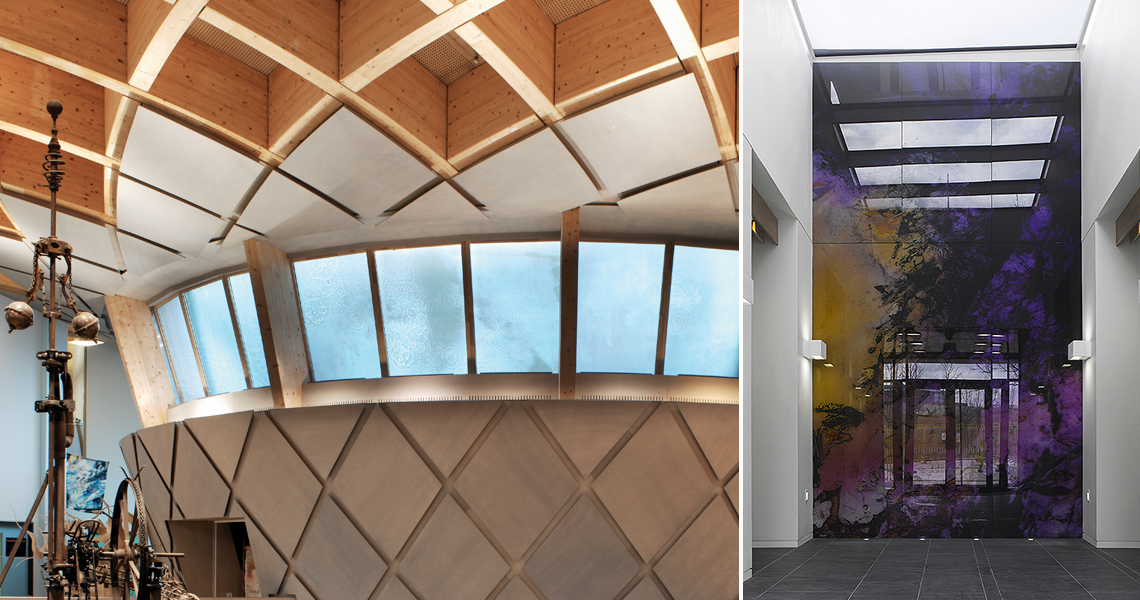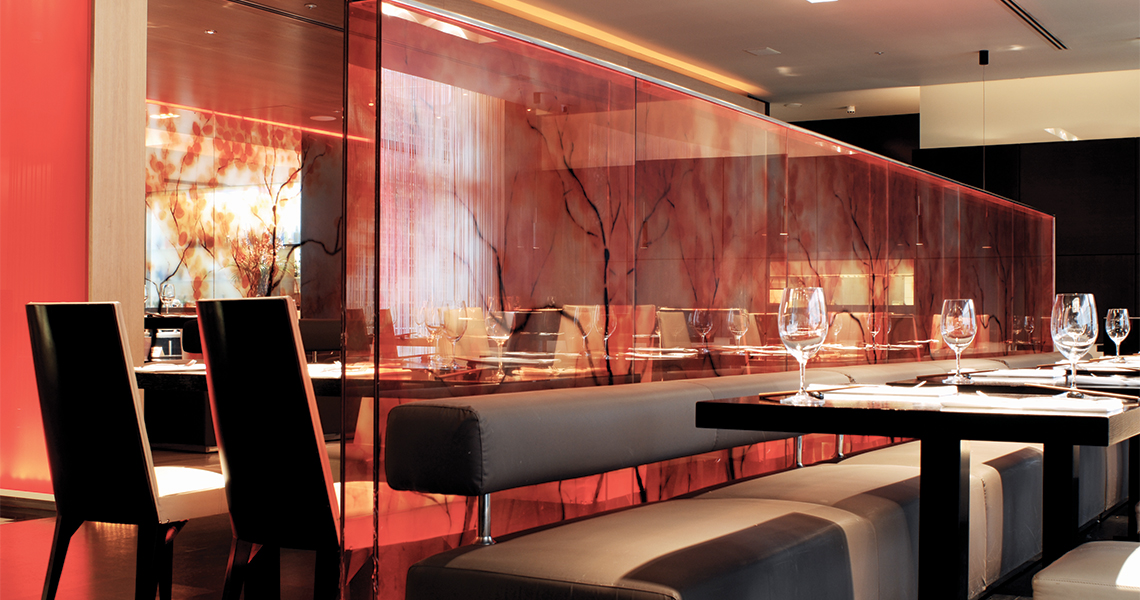Fusion Glass : Digital Print Laminate
Digital print laminates allow for virtually any digital image whether pattern, photographic, solid colour, continuous tone or fade, to be accurately reproduced and then encapsulated within protective glass layers.
An ideal product for use in structural and decorative applications as the process allows for a wealth of possibilities for a wide range of applications including screens, partitions, cladding and features.
Laminated glass comprises of two or more layers of glass which are bonded together with an interlayer using heat and pressure. As well as this PVB (polyvinyl butyl) or EVA (ethylene-vinyl acetate) interlayer, other materials such as coloured interlayers, fabrics, metal meshes and digital prints can be included for a myriad of possibilities.
Laminating can also be combined with other decorative glass products and finishes such as kiln forming, sandblasting and colour coating to further enhance the design.
Product Details
SPECIFICATION:
Available in annealed or toughened (tempered) glass to comply with BS EN 12600, BS 6206 Class A or required national safety standard.
MAX. PANEL SIZE:
2000mm x 4700mm
THICKNESS:
4mm+4mm (nominal overall thickness 10mm)
6mm+6mm (nominal overall thickness 14mm)
Also available in a combination of other glass thicknesses.
GLASS OPTIONS:
Standard Float Glass (slight green tint)
Low Iron (crystal clear)
Mirror Backed
EDGE OPTIONS:
Polished all round (PAR)
Arrised all round (AAR)
Ground all round (GAR)
SURFACE FINISHES:
Clear (standard) or sandblast.
APPLIED FINISHES
Opaque colours, transparent colours or mirror finish can be applied to the rear of the glass.
PROCESSING OPTIONS:
Shaping, drilled holes, notches, waterjet cutouts.
TOLERANCES:
+/- 2mm (glass size)
QUALITY & FINISH:
Final printed image quality will depend on quality of original artwork supplied.
We advise that particular care must be taken to protect the edges of laminated panels against water ingress. Prolonged contact with water can cause the interlayers used in laminating to deteriorate, both in appearance and adhesion. Edges should also be protected from contact with compounds and products containing mineral or vegetable oils and unsuitable glazing compounds such as acid curing silicones.
For more information please refer to our Advice Manual (available on request).


